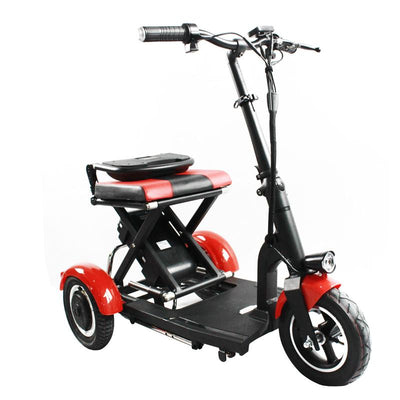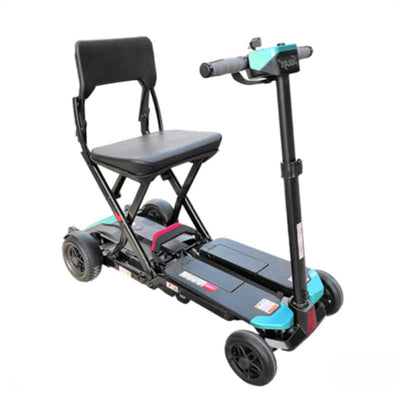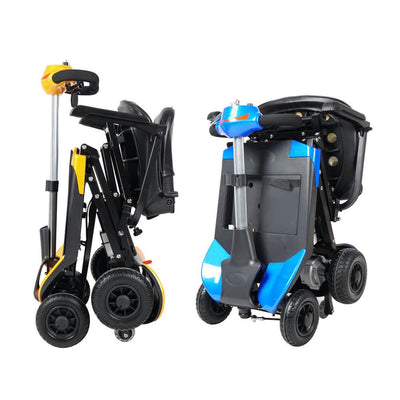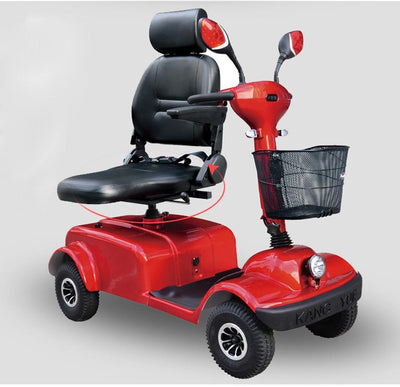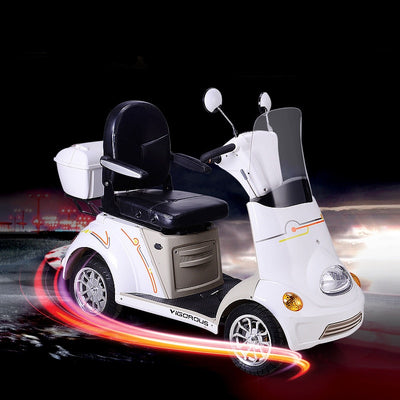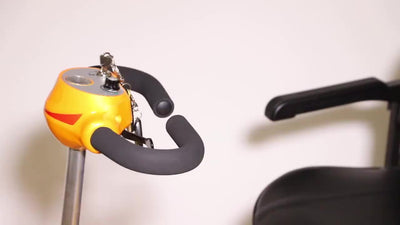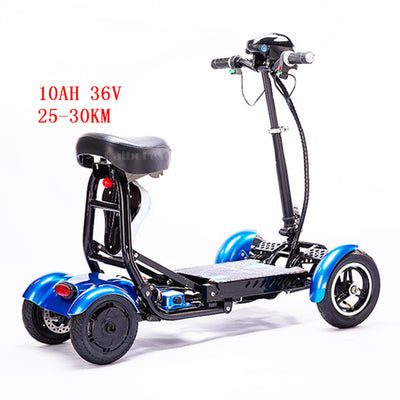Mobility Scooters for Seniors and People with Limited Mobility
Posted by Tom Lee on
Many people have heard of medical scooters or mobility scooters, but it often isn’t clear who would benefit from a mobility scooter or how to go about obtaining one. This comprehensive guide outlines the basics of mobility scooters and how to choose the right make and model for your needs. It also provides some information on how to approach a doctor’s visit, insurance coverage, and working with a supplier to get the correct mobility scooter for you or a loved one.
When looking for a medical device or aid, it’s important to know the right language to use when discussing the products. This section will give you a good idea of where to begin with mobility scooters, which will help later when choosing the right device and working with the doctor, supplier, and insurance company.
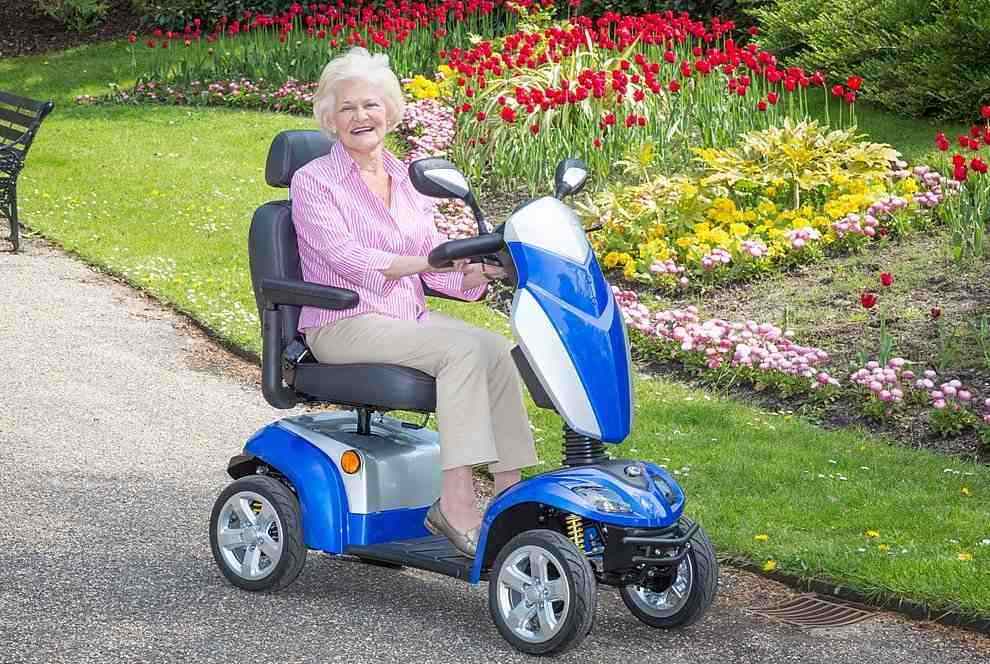
What is a mobility scooter?
A mobility scooter is a medical aid that makes it easier for people who have difficulty walking for an extended period to get around. Mobility scooters are a lot like motorized wheelchairs and are sometimes referred to as electric scooters or power-operated scooters.
There are several types of mobility scooters, but the basic components are a one person seat situated over two back wheels with handlebars to steer the front wheels. The most well-known example of a mobility scooter is the motorized scooter available at many grocery stores. Mobility scooters are special ordered scooters that provide for the user’s needs and accommodate their restrictions.
What is the purpose of a mobility scooter?
The main function of a mobility scooter is to increase the independence of those with mobility restrictions. A mobility scooter is a durable option for traversing pavement, grass, or through a grocery store, whereas a manual wheelchair can increase mobility, but makes navigating complex. Mobility scooters allow the user to get around all on their own and many of them can be transported in the trunk of a car.
What are the benefits of using a mobility scooter?
Seniors with decreased mobility can operate the scooter on their own, just like they would drive a car, and can continue to go where they want to go and maintain their independence. Most mobility scooters are affordable, easy to operate, compact enough to transport to and from home, and can be used both indoors and out. Mobility scooters can help seniors continue to shop on their own, participate in activities, visit friends, and attend outdoor events. Many aspects of life that are affected by limited mobility can be enhanced with a mobility scooter.
Who typically uses a mobility scooter?
The main reason an individual uses a mobility scooter is that an ailment or condition is limiting how he or she gets around. This can be due to age, such as with seniors; due to health conditions like arthritis, stroke, obesity, and Multiple Sclerosis; or due to coronary or lung issues. A mobility scooter is also an option if the user does not have the upper body strength, flexibility, or coordination to operate a manual wheelchair.
Since mobility scooters are a medical device, it’s required that candidates work with their doctor to establish their medical necessity for a scooter and follow the necessary steps to obtain one. There are many reasons someone may need a mobility scooter, as they are easy to use and convenient when compared to using a manual wheelchair.
Someone is a good candidate for a mobility scooter if they can:
- Walk a few steps
- Sit for extended periods
- Operate the scooter without assistance
- Drive and navigate the scooter on their own
A mobility scooter may not be the best mobility device if:
- The user has vision problems, as the scooter may be difficult to steer and navigate
- The user has mental difficulties, as the scooter may be too complex to drive
- The user needs to be strapped in, as scooters require the user to support themselves while seated
- The user cannot sit for extended periods
- The user has no mobility, as most scooters require the user to get on and off with minimal assistance
While many seniors may fulfill these requirements, working with a doctor will ensure that the mobility scooter is medically necessary which will help with funding and insurance coverage.
Is a mobility scooter a good option for me?
After learning about mobility scooter basics, you may feel you are a good candidate for a scooter or know someone who seems like a good candidate. The best way to know if a scooter is right for you is to spend some time listing out the reasons why you feel you would benefit from using a mobility scooter. Having your ideas on paper makes it easier to discuss your reasons with your doctor and is a great first step towards finding the correct scooter for you. Remember, a mobility scooter is a medical device, so any information you have to suggest you’re an ideal candidate will help you in the process.
Questions to answer before meeting with your doctor:
- How is my mobility limited or restricted?
- How far can I walk with assistance? Without assistance?
- How would a mobility scooter increase my independence?
- Why am I a good candidate for a mobility scooter?
How to choose a mobility scooter
It’s important to take your time when choosing a mobility scooter, as it’s a very personal decision. This medical device will become part of your daily life, so it’s crucial to consider what you need the scooter to accomplish, how it will fit into your routine, and what features are necessary. It may be useful to visit a website with mobility scooters for sale, such as Scootaround Equipment Sales, and look at what models, sizes, and other options are available. This will give you an idea of what mobility scooters can offer.
What to consider when choosing a mobility scooter
The three most important things to consider when choosing a mobility scooter are the function, size, and features. These three areas will help you decide which mobility scooter will increase your independence and enhance your mobility.
Function
When considering function, you are evaluating how a mobility scooter will fit into your life. This includes how the mobility scooter will fill in where your mobility is currently restricted or limited. Choosing a mobility scooter requires many more decisions than one would think. It may be easier to compare choosing a mobility scooter to buying a new car. You want to consider the exterior, the interior, and the added features, just as you would with a car. The function aspect is similar to considering what you need out of a new vehicle. Where do you take it, what does it need to do, and how will it add value to your life?
The mobility scooter will be transporting you at home and in public, so you need to consider the following:
- Does the mobility scooter need to handle parking lots, gravel, sidewalks, or grass?
- How far will you need the mobility scooter to travel on one full charge?
- Does the mobility scooter need to be easy to assemble, break down, and store?
- Do you need to be able to lift the mobility scooter into the trunk of your car?
- Where will the mobility scooter be stored when you aren’t using it? In your home or garage?
Size
Mobility scooters come in a range of sizes – from compact scooters that are lighter and easier to assemble, to full size or heavy duty mobility scooters that are larger and more rugged.
When considering mobility scooter sizes, you may want to answer the following questions:
- Where will the mobility scooter be driven primarily?
- How will the mobility scooter be transported?
- Do my home, vehicle, work, and other primary locations have the space to navigate a mobility scooter?
Choosing the right sized mobility scooter for your limitations and your needs is a key component when you’re shopping. The size of the mobility scooter will dictate the battery life, overall distance driven between charges, and the body weight the mobility scooter can support.
What are the most important features of a mobility scooter?
The last component to consider when shopping for a mobility scooter are the features the scooter offers. The scooter’s features will help tie everything together and highlight how the specific model will fulfill your needs and enhance your life.
Scooter layout
The scooter layout is the overall look and feel of the mobility scooter. When thinking about this feature, you want to make sure that when seated on the scooter the user can reach all the necessary buttons, handles, and storage spaces. This will allow them to be in control and get the most function out of the scooter.
Wheels
Mobility scooters can come with three or four wheels, usually with the seat situated over the rear axle. Three-wheeled mobility scooters can be easier to steer in close spaces, while four wheels offer a more all-terrain option. Wheel size is also important to consider since this will provide traction over a variety of surfaces.
Seat
The seat of the mobility scooter should be comfortable, supportive, and large enough to accommodate the user. Some seats offer a swivel option, which makes it easier to get on and off, as well as moveable armrests and adjustable backs, just like in a car.
Steering
Steering and navigation on a mobility scooter are usually done with a handlebar-style steering column, similar to a bicycle or a motorized scooter. This gives the user full control over the device without needing to operate a pedal system. When seated on the mobility scooter the operator should be able to reach the handles easily and operate all the controls comfortably.
Battery
Most mobility scooters are battery operated and need to be fully charged to get the maximum run time and distance out of them. Typically, the bigger the mobility scooter the larger the battery, but smaller and more portable mobility scooters also have a range of battery life and distance depending on the model and overall size.
You should also consider where in your home or garage you will be charging the mobility scooter. Batteries can be replaced or upgraded, so if there’s a specific model you’re interested in, the battery may have a customization option to suit your needs.
Storage
Lastly, most mobility scooters offer some form of storage, either with the traditional front basket or a rear storage space. It’s good to consider what you’ll need to carry on a daily basis, including any oxygen or medical devices, as well as a purse or backpack. The mobility scooter is your main mode of transportation, so there should be room to hold groceries and assist with your daily tasks.
What types of mobility scooters are available?
There are four main types of mobility scooters, each differing in size, weight, and capabilities. The main function of all four is the same: to increase independence and compensate for mobility limitations or restrictions. All four of these types are available through a variety of suppliers.
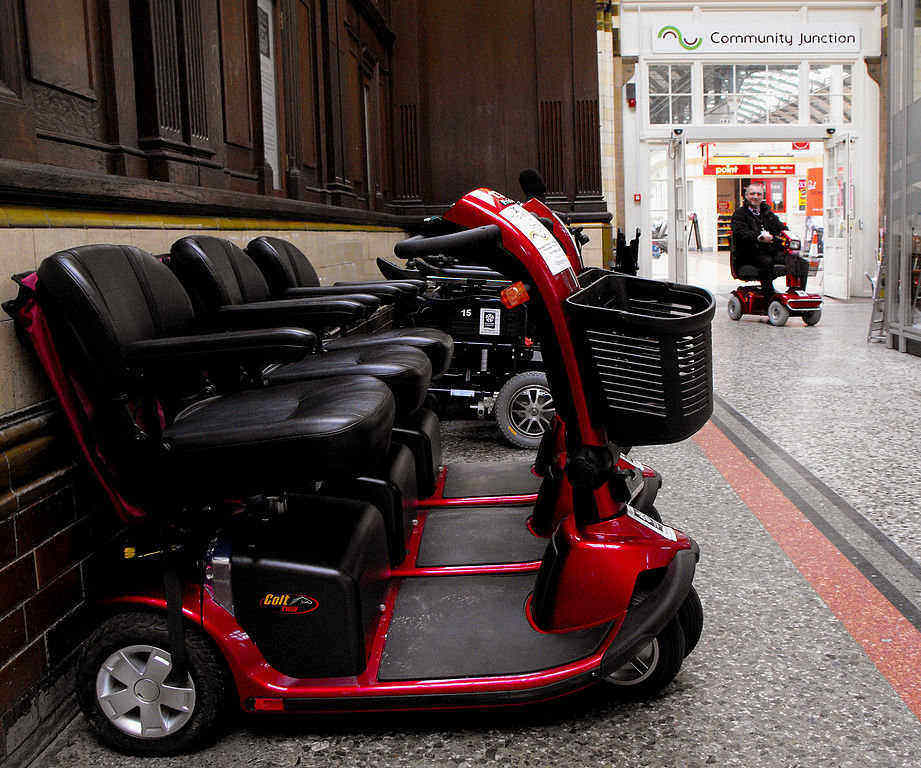
Lightweight
Also categorized as transportable mobility scooters, these are the lightest and most portable of the four types. These scooters are ideal for frequent travel, as they are very easy to transport. If you’re looking for a mobility scooter for air travel, taking on a cruise, or a trip to an amusement park, this is a solid option. Although most lightweight models are on the smaller side and don’t come with as many added features, they are still a convenient way to increase mobility and maintain independence while out in public settings.
Full size
A full-size mobility scooter is a bit larger and offers more features, such as suspension, larger seating, and more storage. This type of scooter has a larger battery, allowing for more time and miles between charges. Full-sized mobility scooters aren’t as portable as lightweight models due to their larger frames and heavier weight, but they do typically offer more in terms of features and storage.
Heavy duty
If you’re looking for a mobility scooter that can handle off-road terrain and has solid durability, a heavy duty model may be good option. This type of scooter can support more weight due to its construction, with some models handling up to 500 pounds. Heavy duty mobility scooters typically have a heavier tread tire, a larger battery, and can cover more miles on a full charge compared to the lighter and smaller models.
Folding or Compact
Another prominent type of mobility scooter is the folding or compact scooter. This is a popular type because it is easy to break down, transport, and commonly fits in the trunk of a car. Folding or compact scooters are usually also lightweight, making them a good choice for those that need a transportable mobility scooter that can be used both outside and inside of the home.
Mobility Scooters and Insurance Coverage
How do I start the process to obtain a mobility scooter?
Mobility scooters are a medical device, and some require a doctor’s approval to obtain one. The best way to start the process of getting a mobility scooter is to speak with your insurance company to see what your policy covers in this area. It’s always best to set an appointment up with your doctor to discuss a mobility scooter and establish medical necessity. From there, the doctor will start the paperwork to get your mobility scooter covered and will connect you with a mobility scooter supplier to find the type and model to fulfill your needs.
Will my insurance cover a mobility scooter?
Many insurance plans have some medical device coverage. The best way to know if your insurance plan will cover a mobility scooter is to read your current policy or contact your insurance company. Your insurance provider can also tell you how to start the process, what’s needed for coverage, and which suppliers they work with.
Will Medicare cover a mobility scooter?
Medicare has specific rules and requirements in order to cover a mobility scooter. To get the clearest information, it’s best to talk to your Medicare representative. Typically, Medicare won’t cover a mobility scooter if you don’t need the scooter to get around in your home. This makes the situation complicated because the insurance may not cover the scooter even if there is a medical need depending on your mobility.
Medicare Part B considers a mobility scooter as Durable Medical Equipment or DME, which can be covered under your policy. However, you’ll require a doctor’s written order indicating that a mobility scooter is required, there is clear evidence your mobility is limited, you can’t get around without assistance, and you can use a mobility scooter without assistance. Medicare Part B can cover 80% of mobility scooter costs, which is why it’s important to start the process correctly from the beginning and work with doctors and suppliers that participate in Medicare.
There are many benefits to using a mobility scooter, including the ability to retain your independence and increase mobility in your daily life. Mobility scooters are a solid option because there’s a specific type or model for every need and many are simple to operate. Whether you’re looking to rent a mobility scooter or take one home, all types of mobility scooters are available through Scootaround. They can help you find what you’re looking for and answer any questions you may have!
- Tags: mobility scooter

